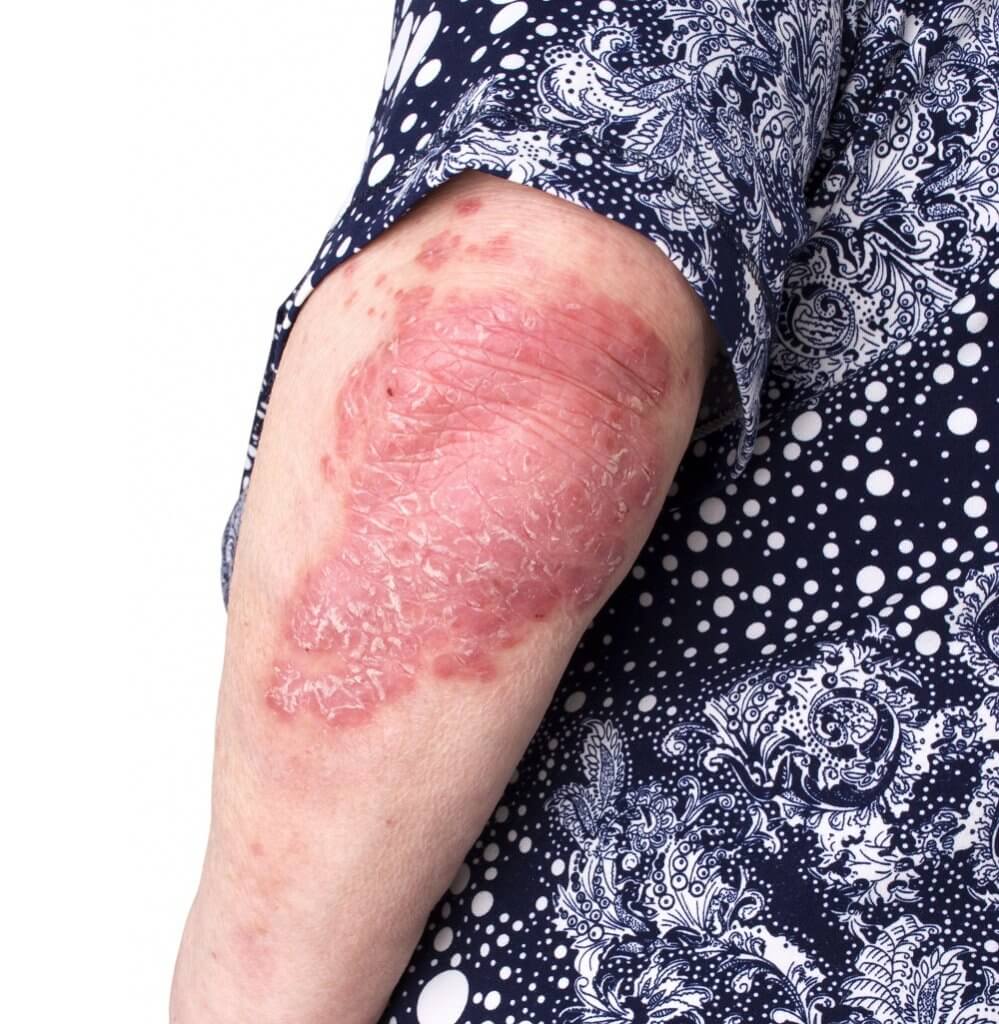August is psoriasis awareness month. This month, we will be highlighting different aspects of psoriasis, the way it can affect someone’s life, and possible treatment options. We will walk through an overview of psoriasis. You can always reach out to the U.S. Dermatology Partners team to learn more about your skin health.
What is Psoriasis?

Psoriasis is a condition in which the body’s immune system is hyperactive in ways that it shouldn’t be. This hyperactivity leads to inflammation throughout the body and causes rashes to appear on the body. The most common places for the rash of psoriasis to occur are on the elbows and knees, but there are a number of other places psoriasis can occur including the scalp, in the ears, the lower back and buttocks, the genital area, the lower legs, and palms of the hands and soles of the feet. Psoriasis presents on these areas as well-demarcated red, raised rashes that tend to have a white or silvery scale on top. Psoriasis can itch but generally does not.
Psoriasis is a complex immune system phenomenon. Generally, about 80% of patients have mild to moderate disease, which can be easily managed with topical creams or ointments. Around 20% of psoriasis patients will have what’s considered to be “moderate to severe” disease in which larger areas of their bodies are covered with psoriasis plaques, more difficult to treat areas of their body are affected – such as their scalps, hands/feet, nails, or genital areas – or they can even develop painful joints, which is termed psoriatic arthritis. If you think you may have psoriasis, it is important to seek consultation with a board-certified dermatologist, because this disease is very treatable and the disease can not only affect your skin but also your internal organs in the long run.
Who Develops Psoriasis
Anyone of any age can develop psoriasis. You can develop psoriasis as a young child, though that’s uncommon. The most common times to develop psoriasis are in your 20s or in your 40s-50s. Almost all people who develop psoriasis will have some form of it for the rest of their lives, though it is hard to predict how the severity of their disease will change over time. In general, there is a genetic component to psoriasis, so it does tend to run in families. However, it doesn’t always mean that parents, children, or siblings will all be affected or even be affected to the same degree.
How is Psoriasis Treated?
There are a number of useful treatments available for psoriasis to keep it well controlled.
When treating any form of psoriasis, the severity and body location are the most important things to assess. Milder forms of psoriasis can usually be easily managed with topical steroids or other combination creams, which typically implore the use of some type of steroid to help reduce inflammation in the skin. As cases become more severe, other options your dermatologist may consider include light therapy (also called narrowband UVB or phototherapy), oral medications, or injectable medications. It is important to consult with a board-certified dermatologist in order to know all of your options for treatment.
Schedule a Visit to U.S. Dermatology Partners
When you’re ready to get started learning more about psoriasis, the U.S. Dermatology Partners team is here to help. Our skilled dermatologists offer effective treatment options and can partner with you to manage symptoms of all types of psoriasis. If you would like to schedule an appointment in an office near you, use our in-office appointment request form to get started. One of our team members will be in touch soon.
If you would prefer to start with a virtual consultation with our team, our dermatologists are happy to also offer teledermatology visits. You can schedule an appointment to visit with us virtually using our teledermatology request form.
Find a location near me
or

